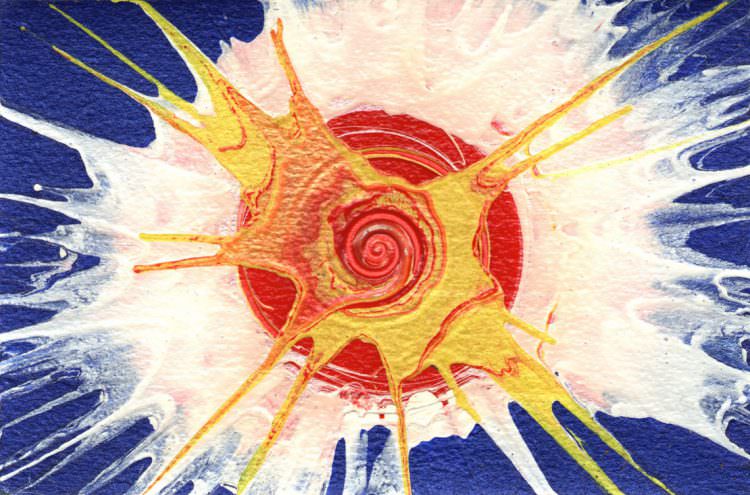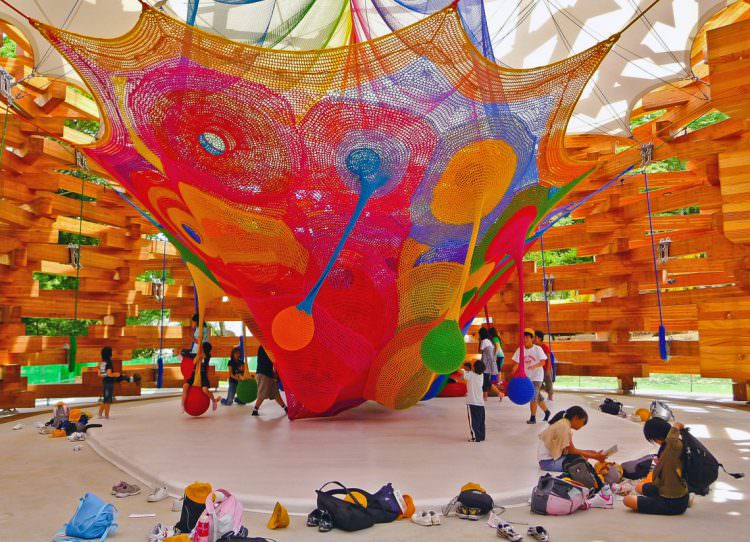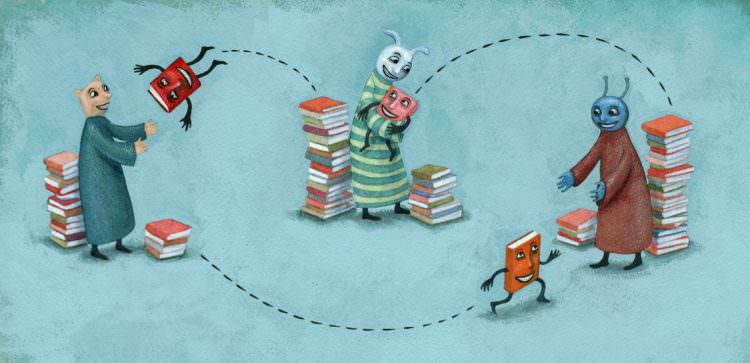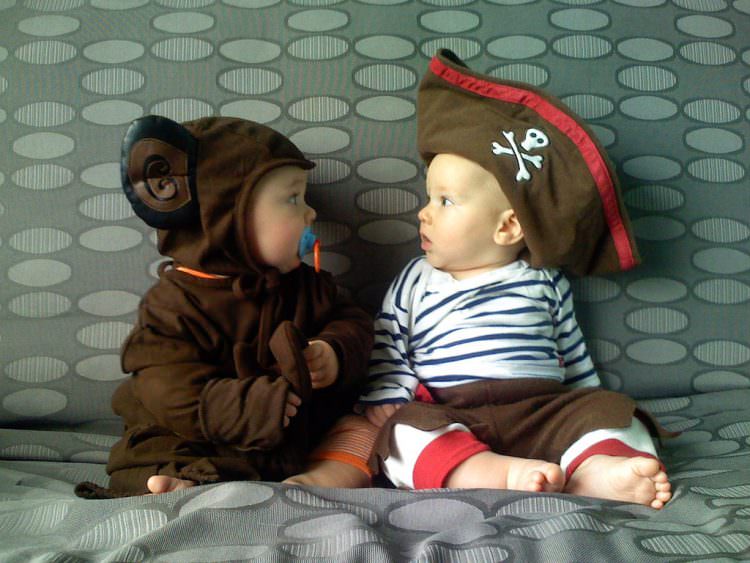Many parents are unsure how to incorporate art into their children’s development, but it’s a really important part of your baby’s childhood! We’re here to help.

Why It’s Important
In the past art has been considered a frivolous activity mainly only used at play. But as we know, play is an important part of how children learn- and art is a particularly helpful form of play. So what role does art play in childhood development, and why is it so important?
1. Creativity and Curiosity
Children come into this world curious and ready to explore. It’s what encourages them to learn and overcome countless failures on their way to successfully interacting with the world. Giving children space in which to pursue their curiosity and creativity encourages more of the same, and helps them become better learners, observers, and creators.
While creativity is helpful in creating art, it is also incredibly important to many other elements of a successful life. Inventive thinkers make good problem solvers, great inventors, and judicious learners.

2. Motor Skills
It’s not too difficult to see how art can help with motor skills. When your child paints or draws, they’ll be using their hands to manipulate objects- and they’ll have more success as they gain more control. Art gives children an opportunity to practice these skills and motivation to really focus on refining them.
Interested in more activities that improve motor skills? Want to learn more about hand-eye coordination? Read our article all about teaching your child impressive hand-eye coordination.
3. Social Skills
Art gives children an outlet to express themselves and an activity in which they can create things that they are proud of. When children create and share their art, they develop self-esteem from experiencing opportunities to make something unique, expressing their feelings and imagination, and receiving praise and critique from those around them. Creating art with family, friends, and parents helps them learn important lessons about sharing and cooperation.
4. Impactful Learning
Any brush with the arts brings with it many opportunities for your children to learn real-world skills, languages, and techniques. Interacting with visual mediums like paint and clay teaches them important visual and spatial recognition skills. Dealing with objects, colors, and sounds present them with opportunities to learn new words and connect them with objects and concepts.
How You Can Use It
Art can sometimes seem intimidating, but you can help your children incorporate art into their learning and development even if you’re not much of an artist yourself. Because ultimately, the important thing for children is the process, not the end result.
The point of art in early childhood is really more about providing children with opportunities to play and create as opposed to structured learning. As such, it’s important for parents to support these kinds of opportunities instead of trying to direct them. Your child will be able to learn and discover more when they’re allowed to explore for themselves. It may not seem like they’re getting much out of playing with the bristles of their paint brush- but it’s this process of exploration, and not the finished product, that lends value to a child’s development.
One such way to support without directing is to provide your child with many different options for creating. If the activity is drawing, for example, give them pens, pencils, markers, crayons, and paints, and allow them to explore all these different tools and imagine for themselves how they can be incorporated into their goal.
It’s also helpful to remember that art is not just limited to visual arts like drawing, painting, and sculpting. If you enjoy writing, cooking, or music, you can use these mediums to help your child explore and express themselves, too!
Age Appropriate Activities
Sometimes it’s difficult to know what your child is ready for, and when the best time is for introducing art into your child’s life. We’re here to help! Here are some ideas of ways to incorporate art into your child’s life at every stage.
Infants

Story Time
You can start early with dramatic storytelling. While your child is still young, introduce them to your favorite children’s stories and really get into it- character voices, props, acting, whatever you’re comfortable with. As your child grows, they’ll want to participate- and this is your chance to really get them involved in exploring their creativity!
Musical Fun
Introduce your child to a lot of different styles of music- and play music for them often. Sing, dance, and play an instrument if you have one. Let your child discover all kinds of music while they’re young.
Toddlers

Dress Up
Whether you purchase costumes or give your child your old hand-me-downs, allowing your child to play dress up is a fun, easy, and somewhat less messy way of allowing them to explore their creativity. Give them as many options as you can and let their imaginations do the rest. They’ll often go even further and role play as their favorite characters or make up their own stories.
Play Musically
Sing and dance together to your child’s favorite songs. Encourage your child and get them excited about it by following their lead. Singing to your children often is an easy way to incorporate music into their lives.
Older Kids
Art Appreciation
As your children age, it’s helpful to not just help them appreciate the value of their own expression, but also to appreciate the value of other’s expression. Taking them to a museum, concert, or another venue where art is displayed and appreciated is a great way to start a conversation.
Cooking up a Storm
Once your child is old enough to understand safety (and how to follow a recipe), having them contribute to dinner is a great way to encourage their creativity, boost their self-esteem, and teach them a valuable life skill. As always, only allow children to participate in activities that are safe for their age and skill level, and never leave a child unsupervised in the kitchen. However, your child could choose the meal, plan the meal, shop for the items needed to cook it, and then measure out and prep for the cooking of the meal.
How You Know It’s Taking
One of the difficulties of parenthood is how you’re never 100% sure if you’re getting through to your kids. But there are always some signs- and this is no exception. If your child is starting to take to art, you’ll see it in a few ways.
Your child will most likely latch onto some sort of art activity once they’ve found something that truly interests them, so if they’re not into it yet, just keep trying different things until they show interest. You’ll know it’s beginning to stick when your child asks to revisit an activity, when they initiate the activity themselves, or when they progress the activity beyond what you’ve shown them.
Parenthood is a wonderful and stressful time. We’re all wondering whether or not we’re doing it right, but we have the support of other parents and reliable internet sources to get us through the long nights and tumultuous days. Let us put your mind at ease by reading this article about when to worry (and when not to) about developmental delays.
At Adam and Mila, we’re determined to bring you the best information on the topics that keep you up at night. We hope that we’ve provided you with a useful guide to your child’s development in terms of art and art education. If you feel we have, please share this with your friends so they can benefit from the information as well! We love to hear your feedback, so please continue to tell us in the comments what you think and what we can do better.





Amazingly impressive well researched articles with interesting illustrations.
This is amazing, I really enjoyed reading this article.